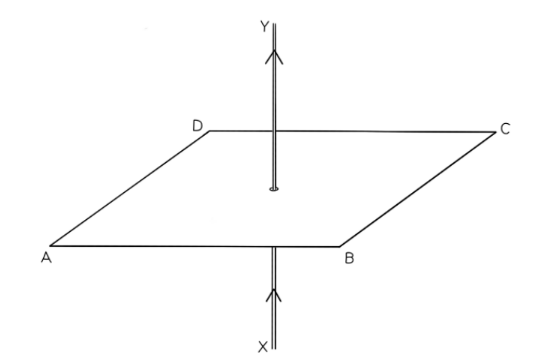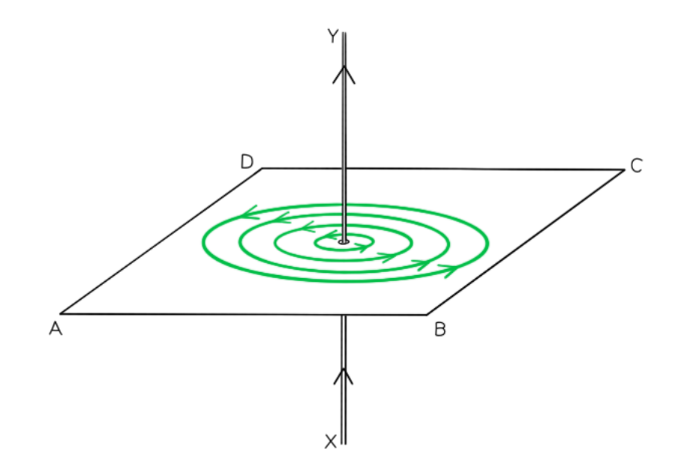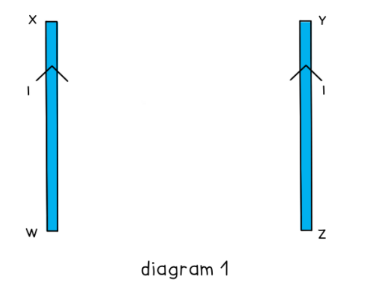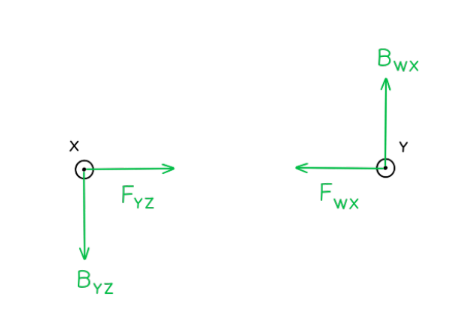MAGNETIC FIELDS IN WIRES, COILS & SOLENOIDS
Magnetic Fields in Wires, Coils & Solenoids
- Magnetic field patterns are not only observed around bar magnets, magnetic fields are formed wherever current is flowing, such as in:
- Long straight wires
- Long solenoids
- Flat circular coils
Field Lines in a Current-Carrying Wire
- Magnetic field lines in a current carrying wire are circular rings, centered on the wire
- The field lines are strongest near the wire and become further part away from the wire
- Reversing the current reverses the direction of the field
- The field lines are clockwise or anticlockwise around the wire, depending on the direction of the current
- The direction of the magnetic field is determined by Maxwell’s right hand screw rule
- This is determined by pointing the right-hand thumb in the direction of the current in the wire and curling the fingers onto the palm
- The direction of the curled fingers represents the direction of the magnetic field around the wire
- For example, if the current is travelling vertically upwards, the magnetic field lines will be directed anticlockwise, as seen from directly above the wire
- Note: the direction of the current is taken to be the conventional current ie. from positive to negative, not the direction of electron flow
Field Lines in a Solenoid
- As seen from a current carrying wire, an electric current produces a magnetic field
- An electromagnetic makes use of this by using a coil of wire called a solenoid which concentrates the magnetic field
- One ends becomes a north pole and the other the south pole
- Therefore, the magnetic field lines around a solenoid are very similar to a bar magnet
- The field lines emerge from the north pole
- The field lines return to the south pole
- Which is the north or south pole depends on the direction of the current
- This is found by the right hand grip rule
- This involves gripping the electromagnet so the fingers represent the direction of the current flow of the wire
- The thumb points in the direction of the field lines inside the coil, or in other words, point towards the electromagnet’s north pole
Field Lines in a Flat Circular Coil
- A flat circular coil is equal to one of the coils of a solenoid
- The field lines will emerge through one side of the circle (north pole) and leave the other (south pole)
- As before, the direction of the north and south pole depend on the direction of the current
- This can be determined by using the right hand thumb rule
- It easier to find the direction of the magnetic field on the straight part of the circular coil to determine which direction the field lines are passing through
Worked example
The current in a long, straight vertical wire is in the direction $X Y$, as shown in the diagram.

Sketch the pattern of the magnetic flux in the horizontal plane $A B C D$ due to the current-carrying wire. Draw at least four flux lines.

- Concentric circles
- V Increasing separation between each circle
- Arrows drawn in anticlockwise direction
Exam Tip
- Remember to draw the arrows showing the direction of the field lines on every single field line you draw. Also, ensure that in a uniform magnetic field, the field lines are equally spaced.
- Factors Affecting Magnetic Field Strength
- The strength of the magnetic field of a solenoid can be increased by:
- Adding a core made from a ferrous (iron-rich) material eg. an iron rod
- Adding more turns in the coil
- When current flows through the solenoid with an iron core, it becomes magnetised, creating an even stronger field
- The addition of an iron core can strengthen the magnetic field up to a several hundred times more
- When more turns are added in the coil, this concentrates the magnetic field lines, causing the magnetic field strength to increase
FORCES BETWEEN CURRENT-CARRYING CONDUCTORS
- Origin of the Forces Between Current-Carrying Conductors
- A current carrying conductor, such as a wire, produces a magnetic field around it
- The direction of the field depends on the direction of the current through the wire
- This is determined by the right hand thumb rule
- Parallel current-carrying conductors will therefore either attract or repel each other
- If the currents are in the same direction in both conductors, the magnetic field lines between the conductors cancel out – the conductors will attract each other
- If the currents are in the opposite direction in both conductors, the magnetic field lines between the conductors push each other apart – the conductors will repel each other
- When the conductors attract, the direction of the magnetic forces will be towards each other
- When the conductors repel, the direction of the magnetic forces will be away from each other
- The magnitude of each force depend on the amount of current and length of the wire
Worked example
Two long, straight, current-carrying conductors, $W X$ and $Y Z$, are held at a close distance, as shown in diagram 1 .

The conductors each carry the same magnitude current in the same direction. A plan view from above the conductors is shown in diagram 2.

On diagram 2, draw arrows, one in each case, to show the direction of:
- The magnetic field at $X$ due to the current in wire $Y Z$ (label this arrow $B_{Y Z}$ )
- The force at $X$ as a result of the magnetic field due to the current in the wire $Y Z$ (label this arrow $\mathrm{F}_{\mathrm{YZ}}$ )
- The magnetic field at $Y$ due to the current in wire $W X$ (label this arrow $B_{w x}$ )
- The force at $Y$ as a result of the magnetic field due to the current in the wire $W X$ (label this arrow $F_{w x}$ )

- Newton’s Third Law states:
- When two bodies interact, the force on one body is equal but opposite in direction to the force on the other body
- Therefore, the forces on the wires act in equal but opposite directions
